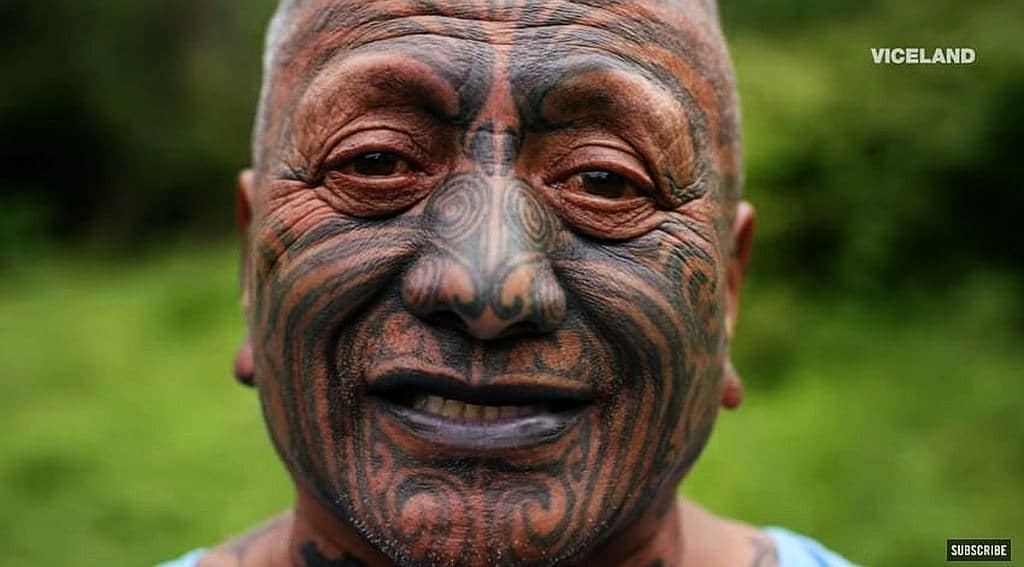
On tonight’s Needles and Pins on VICELAND, we travel to New Zealand with British body modification artist Grace Neutral to explore the art of Maori tā moko tattooing and learn more about their culture.
In a stunning reveal that shows how Maori are reviving the ancient art, Grace joins two cousins as they go on a journey to claim their own personal tā moko — a unique permanent body and face marking — carved by uhi (chisels) rather than traditional tattoo needle puncturing.
New Zealand is home to resinous trees and plants found nowhere else which create the pigments used in tā moko, a cultural identity marker that is hundreds of years old.
When Europeans came to New Zealand they introduced gunpowder and Indian ink. The ink created a blue tinge to the tattooed skin and soon became popular for the tohunga (expert) tā moko, who combined it with native resinous pigments with their uhi (chisels).
This instrument’s design makes deep grooved lines in the skin which give Māori tattooing a distinctly textured look — also called scarification — in the final result.

Traditionally the chisels were carved from albatross bone. The artist initially draws the moko design on to the intended area of the face with charcoal and water, then places the uhi into the pigment before tapping it on the skin with a mallet which makes small incisions for the pigment to settle into.
Over time, as more Europeans came to New Zealand, the Māori modified their traditional techniques with more metal instruments and eventually started using more tattoo needles.
Needles & Pins ‘New Zealand’s Ancient Tattoo Identity’ airs tonight at 10/9c on VICELAND.